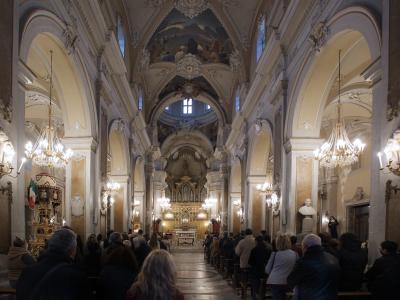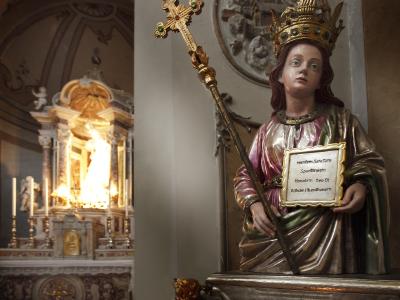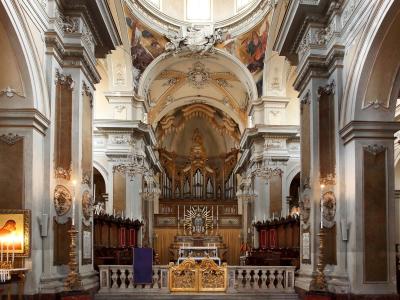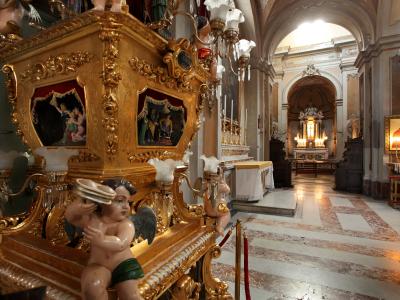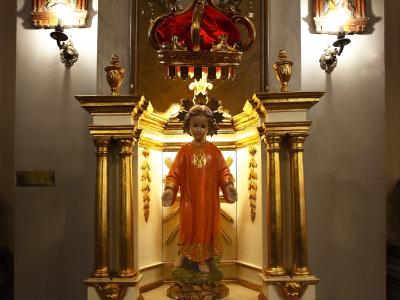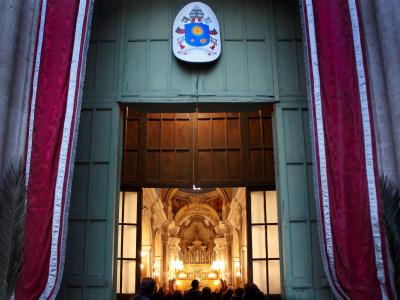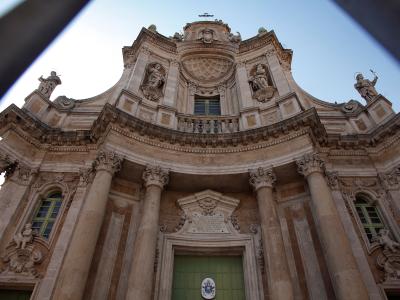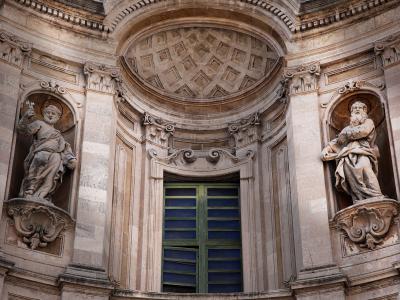The Basilica of Maria Santissima dell'Elemosina, or rather, the appellation of ?collegiate? by which the church is known to all, is linked to a more than centuries-old dispute that has pitted it against the nearby cathedral. History tells us that starting in the ?300s the cadet branch of the Aragonese who ruled Sicily took as their residence for their court the Ursino castle in Catania. By virtue of the new seat elected for the royal family, the king chose as his own private chapel the church of S. Maria dell'elemosina. The church was one of the oldest, built as early as the first centuries of Christianity. The site was the same as a pagan temple dedicated to Proserpine. It is said that there was an image of the Virgin venerated by the entire citizenry at that site. Some of the most fervent, wanting to give the sacred image a more worthy location promoted the collection through quests of the money needed to build a church that was soon considered the most important Christian temple after the cathedral. In 1396 the church was officially given the title of royal chapel and as such also assumed all the privileges that Palermo's Palatine Chapel in the Norman Palace had. Later in 1446, under the patronage of King Alfonso I, the papal bull of Eugene IV established at the basilica a college of clerics answering directly to the king who had to govern a very large district including numerous towns, previously included in the cathedral diocese. Numerous episodes of rivalry between clerics of the two different ecclesiastical institutions were recorded in the years and centuries to follow, until the most egregious occurred in 1801. When a cleric of the collegiate church for Lent went to pray with liturgical vestments bearing the symbols disputed by the pro-cathedral faction, right at the cathedral and was grabbed and kicked out in a bad way by the cathedral clerics. After the unification of Italy and the annexation of ecclesiastical property to state property, this rivalry no longer had any reason to exist. Today's basilica is the result of reconstruction carried out after the 1693 earthquake. In order to face the new axis of the city, today's Via Etnea, the church had its entrance rotated 180 degrees. The facade, made of white Syracuse stone and designed in the late Sicilian Baroque style, was designed by Polish architect Stefano Ittar. The two orders of the façade are laid out according to a bold concave-convex pattern punctuated by columns and pilasters in a composite order. The upper register houses on two podiums at the extreme corners, the statues of St. Agatha and St. Apollonia while inside two niches are the statues of St. Peter and St. Paul. In the three-nave basilica plan interior, the fresco on the vault and dome created by Giuseppe Sciuti in the late 19th century and depicting various biblical episodes stands out.
Map
BASILICA DELLA COLLEGIATA
Basilica della Collegiata Via Etnea, 23 95131 Catania CT Italia
Information
Prezzo:





